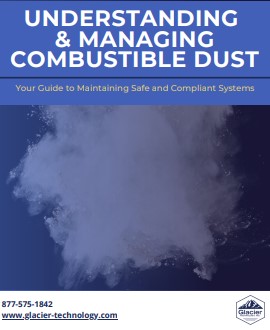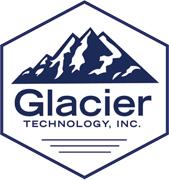Many plant managers are under the mistaken impression that combustible dust is not a problem for their business. While they may see the obvious signs of excessive dust, they may not know that it is actually combustible, or understand the threat that dust imposes on their employees, equipment, and facility. In fact, any fine material that has the ability to ignite and explode when exposed to air is considered combustible.

Identifying Combustible Dust
It may be surprising to learn what types of dust can be combustible. Organic materials like wood, grains, flour, and sugar, as well as many inorganic materials and metals produce combustible dust.
According to OSHA, combustible dust is defined as, “a solid material composed of distinct particles or pieces, regardless of size, shape, or chemical composition, which presents a fire or deflagration hazard when suspended in air or some other oxidizing medium over a range of concentrations.”
The absolute best way to know if you have combustible dust, and to know how to manage the dust you have is to have your dust tested by a reputable and knowledgeable source.
What Businesses are at Risk for Dust Explosion?
Dusts are generated as materials are handled, transported, ground, and otherwise manipulated. Processes like blasting, cutting, crushing, mixing, sifting, or screening dry materials. Even dried residue from the processing of wet materials can create dust.
OSHA reports that dust explosions have occurred in many different types of workplaces and industries, including:
- Grain elevators
- Food production
- Chemical manufacturing
- Pharmaceuticals
- Woodworking facilities
- Metal processing
- Recycling facilities
- Coal-fired power plants
When combustible dust problems are ignored or not properly addressed with explosion and fire mitigation measures, the results can range from significant fines and penalties to disastrous loss of life and property.
Find Out What You Need to Know About Combustible Dust
 In order to educate more facility managers on the topic of combustible dust, the glacier team has developed a free eBook, Understanding & Managing Combustible Dust – Your Guide to Maintaining Safe and Compliant Systems. This digital publication covers what you need to know about combustible dust, including:
In order to educate more facility managers on the topic of combustible dust, the glacier team has developed a free eBook, Understanding & Managing Combustible Dust – Your Guide to Maintaining Safe and Compliant Systems. This digital publication covers what you need to know about combustible dust, including:
- How to know if you have combustible dust
- Understanding NFPA regulations
- Passive and active combustible dust solutions
- An illustrated combustible dust system
At Glacier Technology, we are passionate about the topic of combustible dust because it is a serious risk that is far too overlooked, and seriously underestimated. Systems that lack the proper safeguards for combustible dust ignition can result in consequences ranging from fines for noncompliance to devastating explosions and loss of life.
Take the first step in mitigating your risk by downloading our free guide.
